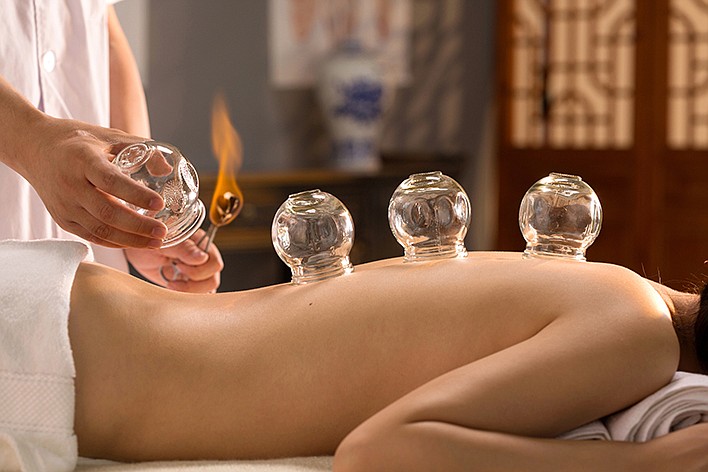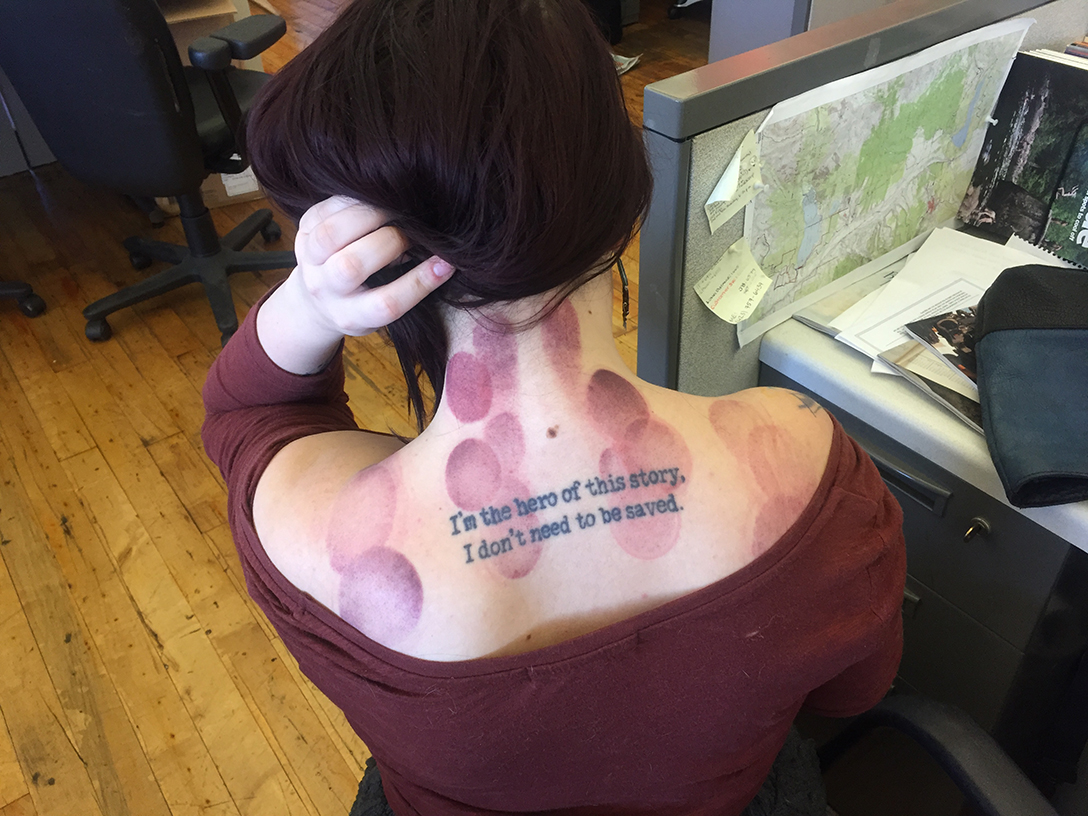East meets West
Chattanooga Holistic Medicine owner Blake Storey, who opened his practice in the 1000 building across from Erlanger’s main entrance last year, is no stranger to the Western medical field nor traditional Eastern medicine. But after studying botany and immunology and earning an undergraduate biology degree, he knew he wanted to use his knowledge for something other than the traditional medical path he’d originally planned.“I felt like there was something more I needed to offer,” he says.So rather than attend a traditional medical school, he obtained a Master of Science in Oriental Medicine from Southwest Acupuncture College. His practice offers acupuncture and other alternative medicine options, and cupping can be particularly beneficial for those not helped enough by acupuncture alone, he says.
If you live in this world, I guarantee you have stress in your neck and shoulders," says Chattanooga Holistic Medicine owner Blake Storey.
I had wandered into his office last month for that very reason, wondering if the cupping trend swimmer Michael Phelps popularized during last year's Olympics could help ease my pain.
It could, Storey told me. I just had to be OK with looking like an octopus had beaten me in a fight for a few days.
As he lit the glass globes for a technique called fire cupping and placed them on my back, I immediately understood the octopus reference. This technique uses fire to create a vacuum as the harmless flames burn through all the oxygen within the cup, suctioning them to your back. While painless, it does come with an aesthetic tradeoff. But if looking like I'd been abducted by aliens for a few days would relieve the endless tension and soreness, I was more than willing to go through with it.
Besides, with celebrities like Gwyneth Paltrow, Jennifer Aniston and Victoria Beckham shamelessly flaunting the large purple polka dots left by cupping, I felt I was in good company.
While "trending" medicine can make those who aren't obsessed with the celebrity world suspicious of the practice, cupping has been a part of standard Eastern medical practices for more than 2,000 years.
How does it work?
Though it seems much different than a massage, the goal of both retention cupping - which refers to the amount of time the cups are left on the skin - and a therapeutic massage are ultimately the same: to release toxins built up in the muscles, whether it's post-workout to avoid soreness, or to treat almost any injury, Storey explains. The vacuum created by the cups pulls the toxins to the surface of the skin, allowing them to then work their way out of the body.
Cupping has several variations, and can increase circulation and aid a variety of ailments. In flash cupping, the cups are quickly pulled off after placement to treat the muscle by pulling it upward, in an inverse to the technique of massage. Flash cupping can help break up stubborn phlegm in lungs either during or after an illness, Storey says.
Lengthier retention cupping sessions in which the cups are left on for 10-15 minutes can relieve tension headaches and swollen joints, in addition to muscle aches. In either variation, the suction can be created through the use of fire, or with special cups that create a vacuum on their own.
The residual discoloration of the skin can appear similar to an angry bruise, but the marks are not painful at all. In fact, Storey says, those marks are proof that the cupping was successful.
Would I go back?
I already have.
Following my roughly 40-minute session - during which I definitely dozed off a few times, lulled by the reprieve from my aching muscles - I spent the rest of the day stunned at the realization that I wasn't constantly "feeling" my back and all its usual tension. But a single session is not a miracle cure for long-pained muscles. With each of my subsequent visits, however, the results have lasted a little longer.
While more than a few people have commented on my cupping marks (they extended all the way up my neck and I saw no point in trying to hide them), no one seemed appalled by my new "accessory," even when I headed out in a cute, black scoop-neck dress after my first session.
"[Most] people are hesitant to show them off," Storey acknowledges of the post-cupping marks, which typically fade to the point of not being noticeable after a few days. "But you shouldn't be ashamed for helping yourself and being healthy. Show them off. Make health sexy."

